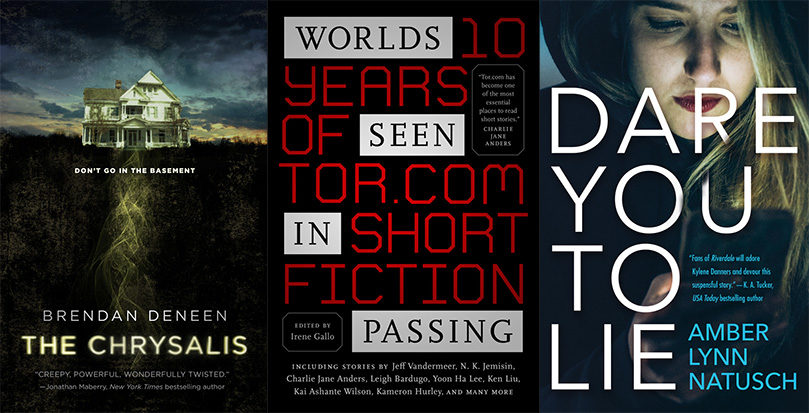
Written by Irene Gallo, Art Director
The ebook edition of Ender’s Game, Orson Scott Card’s classic science fiction novel, releases today with a new cover by Sam Weber.
There is a strange magic about Tor.com that allows it to give us more work while making us feel like it’s Christmas. We were barely settled into the Wheel of Time ebook cover project when Tor.com publisher, Fritz Foy, asked, “What’s next?” The answer was easy. Perhaps not coincidentally, the question came just as Sam Weber handed in the cover art for The Shadow Rising, which everyone loved. That, coupled with the fact that I had wanted to create a cover for Ender’s Game that addressed the emotional conflict of the novel for ages, sent us off and running on a dream project.
First step: asking the editor, Beth Meacham, how she felt about repackaging the book:
When Irene told me that she’d been cleared to create a new art package for Ender’s Game for the eBook release, I confess that I groaned. Covers for this book have always been a problem. It’s not a children’s book, but when you ask for a painting of a ten year old boy, it’s hard not to get something that looks like a children’s book. This can lead to problems, like the email I recently got from a school librarian who was sure that there was some mistake; this children’s book had “bad words” in it.
I had no doubt Sam could portray a boy who wouldn’t put off older readers. I have often felt a number of his paintings show a cool exterior while suppressing some kind of underlying trouble or anxiety; if anything describes Ender, that’s it. When I contacted Sam, I wasn’t surprised to hear that Ender’s Game is one of his favorite novels.
A few weeks later he paralyzed me with an amazing set of sketches. The more I looked at them the more I wanted to see all of them come to fruition. It seemed a crime to have to pick one. After a decade of wanting to see “my” Ender, I was suddenly staring at a dozen. I was afraid of picking a direction I would later regret.
In the end I was intrigued by Sam’s use of scale in the chosen sketch. I loved seeing Ender large with an entire planet underfoot—whether it’s Earth or the alien planet, the fate of both worlds depend on this small boy. The weightlessness, of course, refers to the Battle School exercises so memorable in the book. The flat-color triangles, representing the holographic game pieces, set against the realistic rendering of Ender and the planet, enhance the lie of the game.
I knew Sam would do a great job with the final painting…still, I don’t think I was fully prepared for just how well he was able to portray the depth of character Orson Scott Card gives us in Ender Wiggin.
At that point I was very excited to show Beth. Her response:
The sketches that I saw were very good. The artist is wonderful, and it looked very promising, though again the sketches were of children. Irene and Sam heard me when I said that if we were going to put a child on the cover, that child had to have old and wary eyes, had to look like a real child who had been under great stress. The finished art has that quality in spades. My reaction to seeing the finished art was “Oh! That’s Ender!”
The composition is spectacular, too—it actually illustrates something that is such a powerful part of the novel: Ender has been separated from Earth and humanity even as he is being forged as a weapon to protect them.
I asked Tor books and Tor.com designer, Jamie Stafford-Hill, to do the type layout. He came up with a solution that gave further depth to the cover. Orson Scott Card’s name seems to float in front while the title shimmers in and out between the author’s name and Ender, adding to the sense of weightlessness. Perfect.
At this point the publisher seemed happy, I was ecstatic, the editor loved it, and Orson Scott Card called it, “the best cover art ever to appear on Ender’s Game.” A dream project with a happy ending. At least, so far. Now for the important part: to see how well new readers and fans respond to it.
I asked Sam Weber to share his thoughts on the project:
There’s a great interview with Orson Scott Card at the end of the Ender’s Game audio book. I remember listening to it only moments after those haunting final words call an end to one of my favorite books of all time. In the interview, Card talks about his theatre background and how writing plays affected Ender’s Game. For a book that is so incredibly evocative, there is surprisingly little in the way of specific physical description. Like theatre, it is the language and dialog, the characters that evoke the world in which Ender exists. In most ways that is what Ender’s Game is about for me. The characters. Although the situation is thought-provoking and unique, it’s Ender’s struggle that grabs you and breaks your heart. The weight of the actions he is forced to take in the name of both human and personal survival is crushing. It’s a personal and emotional struggle that feels relevant and timeless, completely independent of the set pieces and stage that Card has nonetheless so beautifully crafted.
As an illustrator, ultimately you want to find something in a story that grabs you, something that pleases a part of your own artistic compulsion and allows you to contribute to the work, even if it’s only in a small way. There is so much to draw upon in this book, from the strange and haunting metaphors that populate Free Play, to Ender’s own physical struggles in Battle School. In the end, Irene Gallo and I ended up settling on a simple solution. With its pared-down background and central figure, it feels theatrical to me, which I like. I’d hoped from the beginning to create something emotional and personal, an image that conveys the loneliness Ender is forced to endure because of his almost alien brilliance.
Reference can be a great asset to an illustrator and it became quickly apparent that I needed to base Ender on a real person. Like the figure at the center of some Greek tragedy, Ender suffers for no fault of his own. I wanted him to seem human and fragile in spite of this mythological quality. Certainly Card achieves this with great success. I am fortunate to have found a model who enabled me to bring this character to life. One of the great things about work set in imaginary places is the freedom that comes with envisioning the unknown. Grounding it in something (or someone) real is important, I think, as it gives the viewer a way in and can lend the work a sense of believability that is difficult to create without observing the world and people around us.
Below are a few of Sam Weber’s initial sketches. Again, so many of these would make great paintings. I imagine some of these would make incredible poster designs, if not book covers.

Cycle through the painting phases:

This article was originally posted on Tor.com on April 12, 2010.
…………………………
From the Tor/Forge November 4th newsletter. Sign up to receive our newsletter via email.
…………………………
More from the November 4th Tor/Forge newsletter:
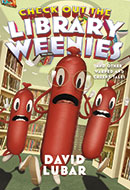 Master of the macabre David Lubar is back with Check Out the Library Weenies, his ninth collection of Weenies Stories. Here are thirty more scary stories for the middle grade audience–perfect for both avid and reluctant young readers who like a few chills and a lot of laughs.
Master of the macabre David Lubar is back with Check Out the Library Weenies, his ninth collection of Weenies Stories. Here are thirty more scary stories for the middle grade audience–perfect for both avid and reluctant young readers who like a few chills and a lot of laughs.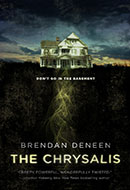 Barely employed millennials Tom and Jenny Decker have to grow up fast when they lose their cheap Manhattan apartment. Leaving “the city” is hard, but the blow is softened when they stumble upon a surprisingly affordable house in the suburbs.
Barely employed millennials Tom and Jenny Decker have to grow up fast when they lose their cheap Manhattan apartment. Leaving “the city” is hard, but the blow is softened when they stumble upon a surprisingly affordable house in the suburbs.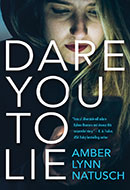 When her FBI agent father is framed for murder, Kylene is forced to move in with her grandfather, back to the small town that turned its back on her, and the boy who betrayed her. All Ky cares about is clearing her father’s name, but someone won’t let her forget the photo scandal that drove her away two years ago. As the threats gain momentum, Ky finds an unlikely ally in the rookie FBI agent sent to keep an eye on her.
When her FBI agent father is framed for murder, Kylene is forced to move in with her grandfather, back to the small town that turned its back on her, and the boy who betrayed her. All Ky cares about is clearing her father’s name, but someone won’t let her forget the photo scandal that drove her away two years ago. As the threats gain momentum, Ky finds an unlikely ally in the rookie FBI agent sent to keep an eye on her.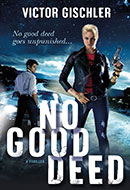 Francis was running late for work when he found the suitcase and the odd card with an email on it. He knew he shouldn’t bother but he couldn’t resist.
Francis was running late for work when he found the suitcase and the odd card with an email on it. He knew he shouldn’t bother but he couldn’t resist.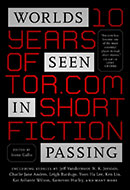 Since it began in 2008, Tor.com has explored countless new worlds of fiction, delving into possible and impossible futures, alternate and intriguing pasts, and realms of fantasy previously unexplored. Its hundreds of remarkable stories span from science fiction to fantasy to horror, and everything in between. Now Tor.com is making some of those worlds available for the first time in print.
Since it began in 2008, Tor.com has explored countless new worlds of fiction, delving into possible and impossible futures, alternate and intriguing pasts, and realms of fantasy previously unexplored. Its hundreds of remarkable stories span from science fiction to fantasy to horror, and everything in between. Now Tor.com is making some of those worlds available for the first time in print.
